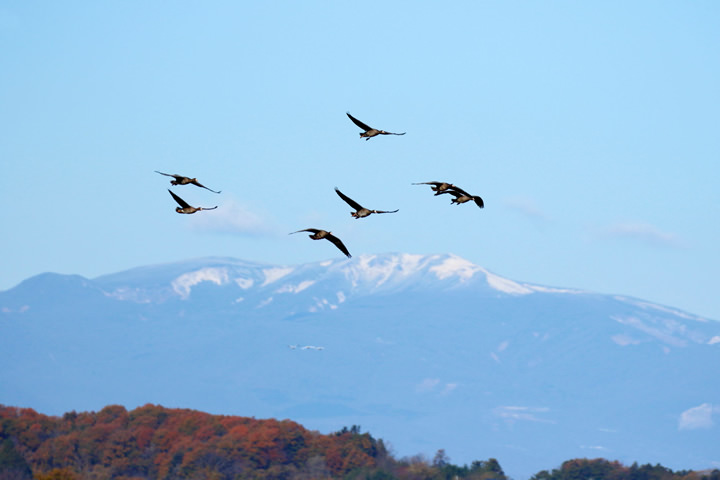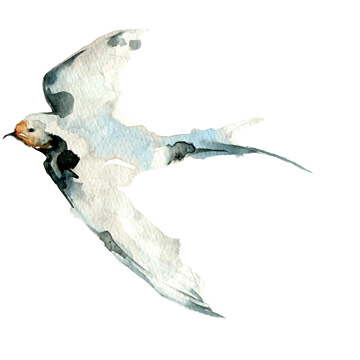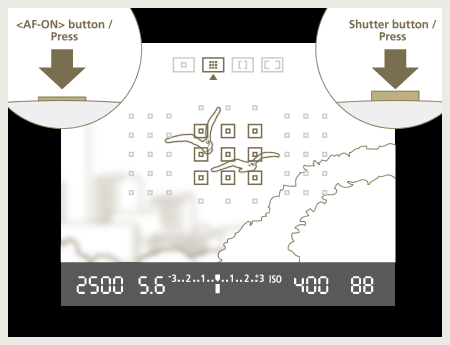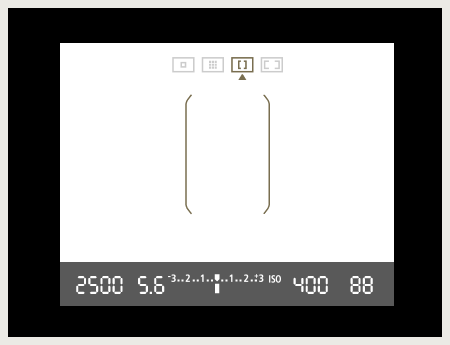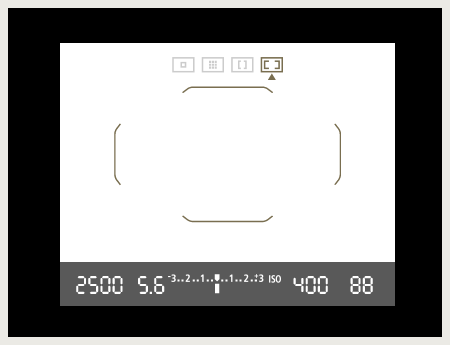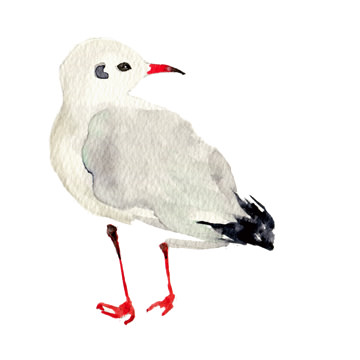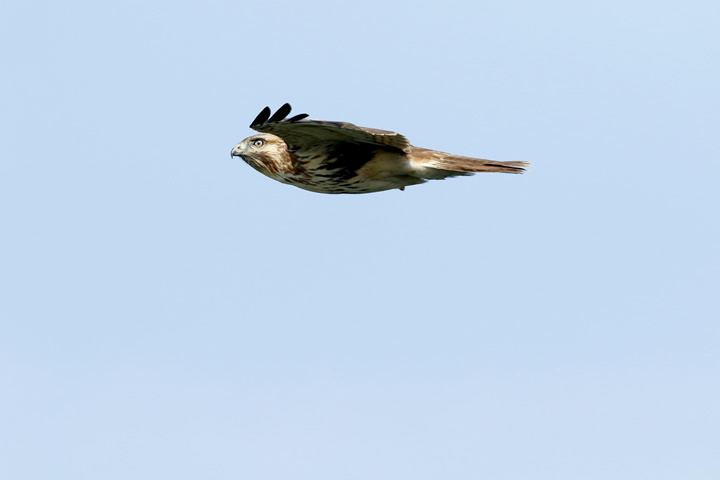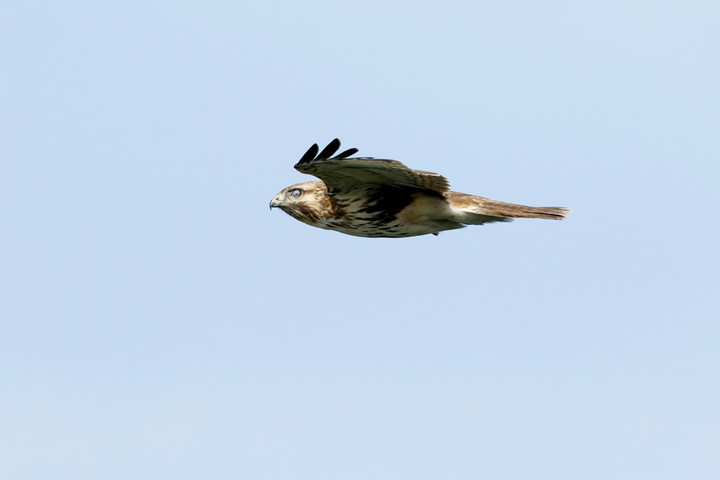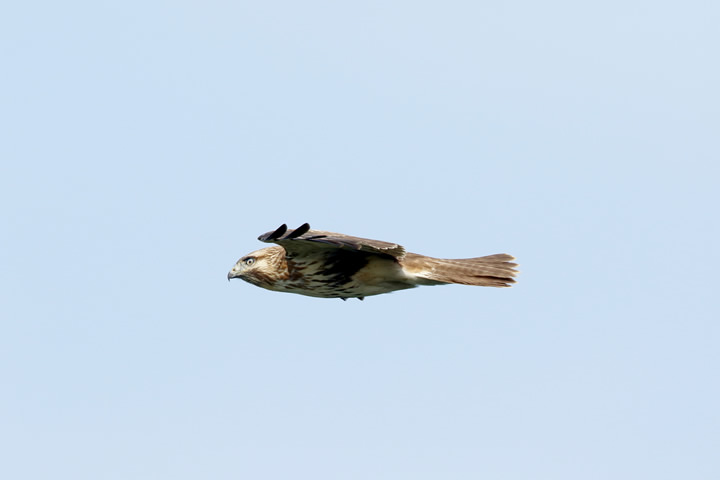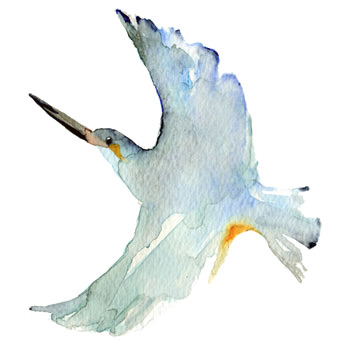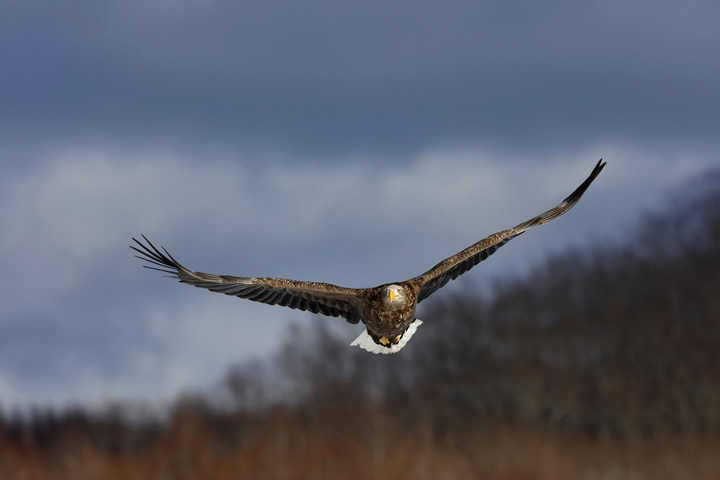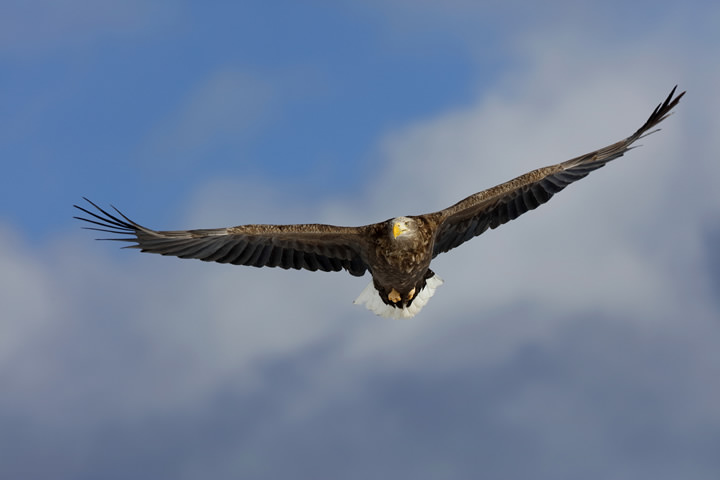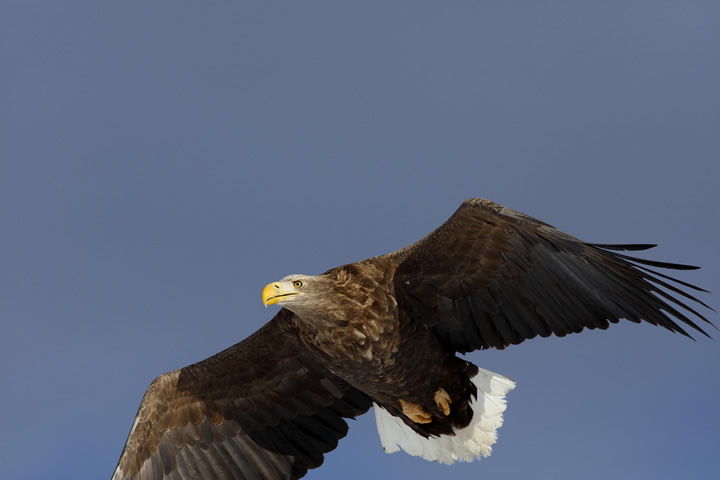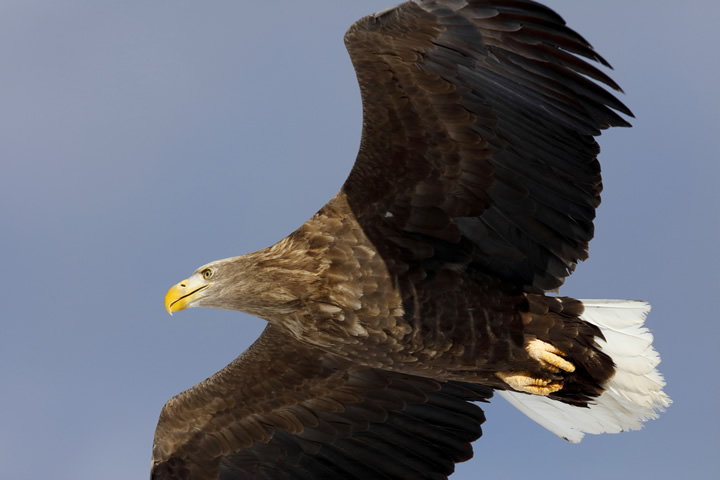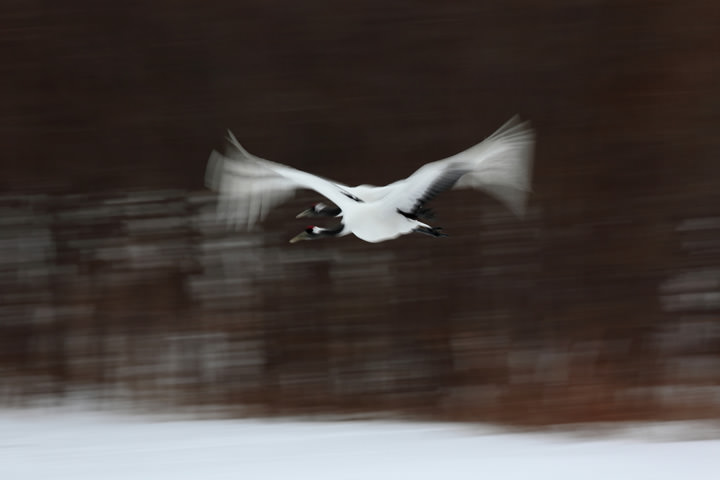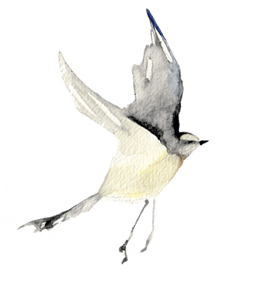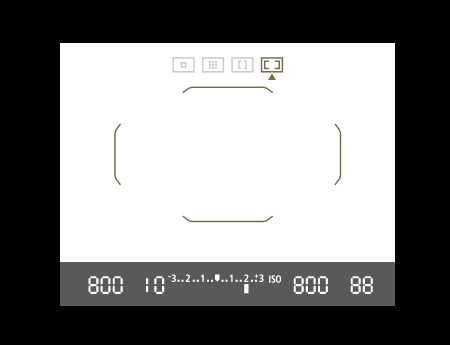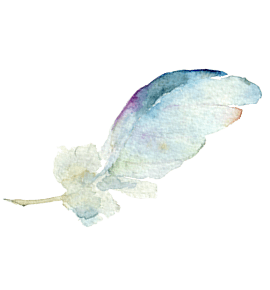I spotted some Common Gulls flying by the river. Since there was a bridge nearby, I set it as my trap focus and afterward when I looked in the viewfinder, I was easily able to confirm the bird in the frame. Then, while tracking the bird I tweaked the focus with the AF-ON button, and I got a shot with two Common Gulls flying by.
how to
photograph
wild birds
Let’s capture sharp photos of birds in flight
As we have seen in the lessons up to now, you will dramatically increase your success rate in photographing flying birds by combining AI Servo AF and back-button AF. Here is a how-to guide for capturing wild birds in flight.
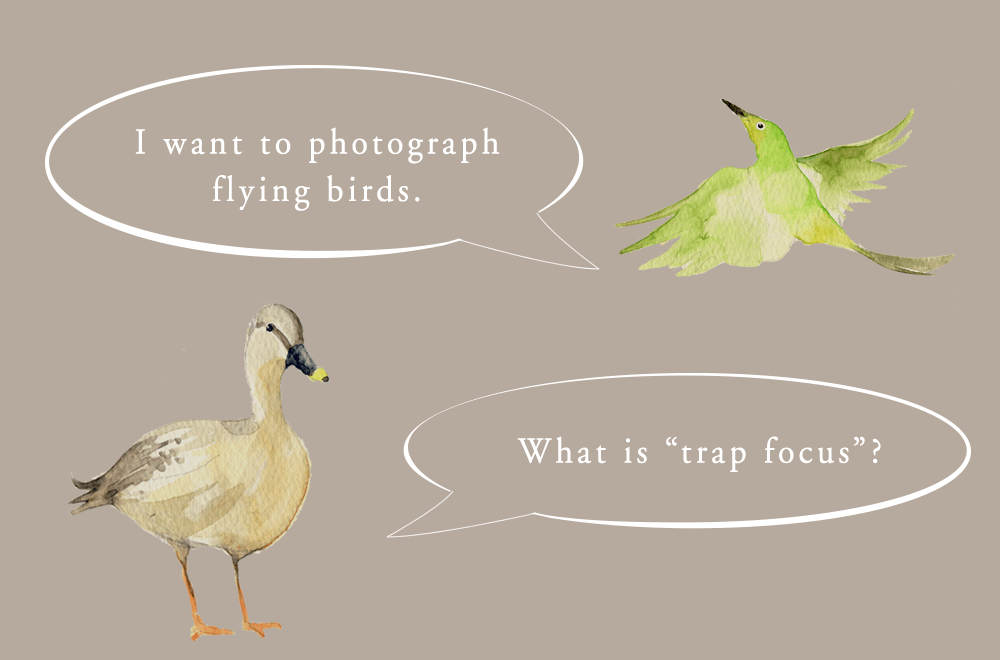
Greater White-fronted Geese often fly in flocks to get to their feeding areas around Izunuma. My goal was to photograph a flock against the background of snow-capped mountains. Entrusting the focusing to Zone AF and AI Servo AF, I concentrated on such things as the formation of the flock and the position of their wings. I selected the best scene.
- Aperture value: f/5.6
- Shutter speed: 1/2500 second
- ISO speed: ISO400
- Exposure compensation: 0
- Focal length: 255mm
- DSLR Camera (APS-C image format)
